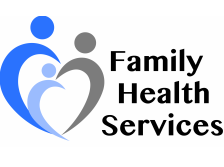Diabetes News – May 2021
May is Stroke Awareness Month
A stroke happens when the blood supply to part of your brain is suddenly interrupted. Then brain tissue is damaged. Most strokes happen because a blood clot blocks a blood vessel in the brain or neck. A stroke can cause movement problems, pain, numbness and problems with thinking, remembering or speaking. Some people also have emotional problems, such as depression, after a stroke.
If you have diabetes, your chances of having a stroke are 1.5 times higher than in people who don’t have diabetes. But your risk is even greater if:
- you’re over age 55
- your family background is African American
- you’ve already had a stroke or a transient ischemic (ih-SKEE-mik) attack (also called a TIA or a mini-stroke)
- you have a family history of stroke or TIAs
- you have heart disease
- you have high blood pressure
- you’re overweight
- you have high LDL (bad) cholesterol and low HDL (good) cholesterol levels
- you are not physically active
- you smoke
You can’t change some of these risk factors. But you can lower your chances of having a stroke by taking care of your diabetes and tackling some of the other risk factors, such as losing weight if you’re overweight.
Typical warning signs of a stroke develop suddenly and can include:
- weakness or numbness on one side of the body
- sudden confusion or trouble understanding
- trouble talking
- dizziness, loss of balance, or trouble walking
- trouble seeing out of one or both eyes
- double vision
- severe headache
If you have warning signs of a stroke, call 9-1-1 right away. Getting treatment as soon as possible after a stroke can help prevent permanent damage to your brain.
For more information on Strokes: https://www.stroke.org/
The Diet-Betus – our version of recipe of the month just with a healthy tweak
Eat smart by using heart-healthy recipes, reviewed and approved by Heart and Stroke Foundation dietitians.
Grilled shrimp and corn casserole
4-6 servings Total time: 38 min
Ingredients
- 1 1/2 lb (750 g) mini potatoes, halved
- 1/3 cup (75 mL) sodium reduced vegetable broth or water
- 3 tbsp (45 mL) chopped fresh parsley, divided
- 1/2 tsp (2 mL) pepper
- 1 tbsp (15 mL) canola oil
- 2 cobs of corn, husked, each cut into 4 pieces
- 1 tsp (5 mL) chili powder
- 1 lb (500 g) large (21/25) peeled shrimp, thawed
- 1 tomato, diced
- 4 cloves garlic, minced
- 1/4 tsp (1 mL) cayenne
Directions
- In a foil or grill safe baking dish, toss potatoes with broth, 2 tbsp (25 mL) of the parsley and pepper. Place on preheated medium-high grill; close lid and grill for 10 minutes, stirring once.
- In a bowl, toss corn with oil and chili powder. Open lid and stir corn into potatoes. Close lid and grill for 5 minutes.
- In same bowl, toss shrimp with tomato, garlic and cayenne. Open lid and stir vegetables. Stir in shrimp mixture; close lid and grill for about 8 minutes or until shrimp are firm and pink and potatoes are tender. Sprinkle with remaining parsley to serve.
Nutritional info per serving (1 of 4)
- Calories 300
- Protein 23 g
- Total fat 5 g
- Saturated fat .5 g
- Cholesterol 160 mg
- Carbohydrates 41 g
- Fiber 6 g
- Sugars 6 g
- Added sugars 0 g
- Sodium 260 mg
- Potassium 1150 mg
Community offerings: *
* Many community offerings have been postponed or canceled as a result of the coronavirus/COVID 19.
Please call the number listed for the event to verify availability, dates, and times.
If you have questions regarding Coronavirus/COVID-19 please call 1-833-4-ASK-ODH (1-833-427-5634)
Or, go to https://www.cdc.gov/coronavirus/2019-nCoV/index.html or https://coronavirus.ohio.gov/wps/portal/gov/covid-19/.
Diabetes Empowerment Education Program (DEEP)
COST: Free
CONTACT: Tina Elmlinger at 419-624-1856
The Diabetes Empowerment Education Program [DEEP] is offered every Wednesday for six weeks. Good attendance is important. This free program is for diabetics, pre-diabetics, and spouses or caregivers of a diabetic. Residents of Erie County, aged 60 or older, please call 419-624-1856 to register.
Diabetes Support Group – Firelands Regional Medical Center
The Diabetes Support Group presented by Jean Feick CNP,CDE, meets the third Wednesday of each month Sept–November and January-May from 12:00pm –1:00pm. This meeting is free to the public and no registration is required. Attendees are welcome to purchase lunch in the hospital cafeteria and come to the adjacent Cafeteria Meeting #1. A different topic will be reviewed each month. If you have questions, please contact the Diabetes Education Department at 419-557-6992.
HEALTH & WELLNESS SCREENING – offered by Firelands Regional Medical Center
You must Pre-register for all Lab Work at 419-557-7840.
Sandusky Health & Wellness
Firelands Regional Medical Center South Campus
1912 Hayes Avenue Sandusky, OH
Saturday, May 15
7:00 am -9:30 am
Sandusky Health & Wellness
Firelands Regional Medical Center South Campus
1912 Hayes Avenue Sandusky, OH
Saturday, June 12
7:00 am -9:30 am
Sandusky Health & Wellness
Firelands Regional Medical Center South Campus
1912 Hayes Avenue Sandusky, OH
Saturday, July 17
7:00 am -9:30 am
Health & Wellness Screenings include:
- Complete Blood Count with Metabolic & Lipid Panel (No Eating or Drinking for 12 Hours – Water Allowed – includes liver and kidney function studies, fasting blood sugar, thyroid, cholesterol, HDL/LDL and triglyceride levels along with a complete blood count.) – $45;
- Hemoglobin A1C (A three-month report card on how well your blood sugars have been running. A test used to diagnose diabetes and/or to evaluate how well your treatment plan is working.) – $25;
- PSA (Prostate Specific Antigen)- $30;
- Vitamin D – $35;
- TSH – $25
Diet and exercise are an essential part of diabetes management, so is routine testing.
The A1C test—also known as the hemoglobin A1C or HbA1c test—is a simple blood test that measures your average blood sugar levels over the past 3 months. It’s one of the commonly used tests to diagnose prediabetes and diabetes, and is also the main test to help you and your health care team manage your diabetes. Higher A1C levels are linked to diabetes complications, so reaching and maintaining your individual A1C goal is important if you have diabetes.
Last quarter, 70% of our diabetic patients had an A1C of less than 9%. Talk with your provider to discuss the right options for you.



